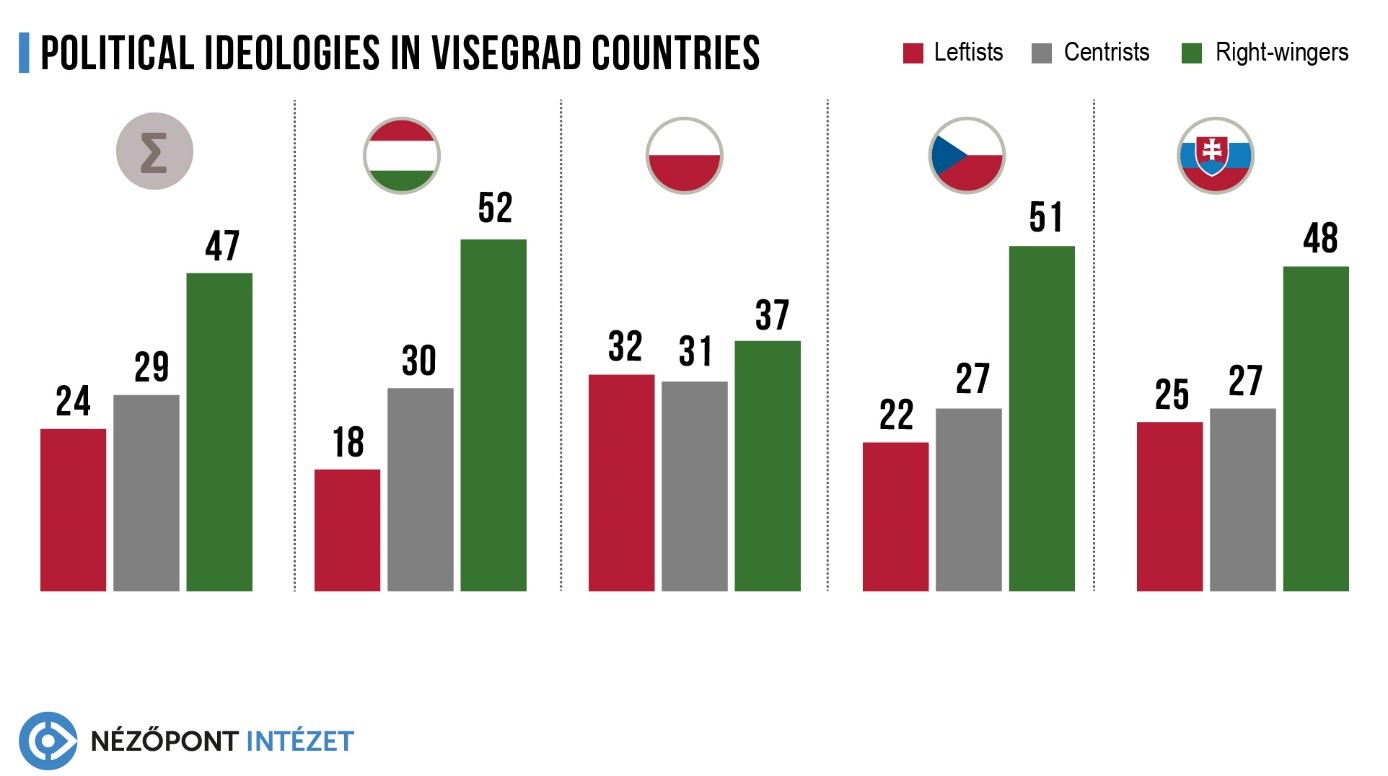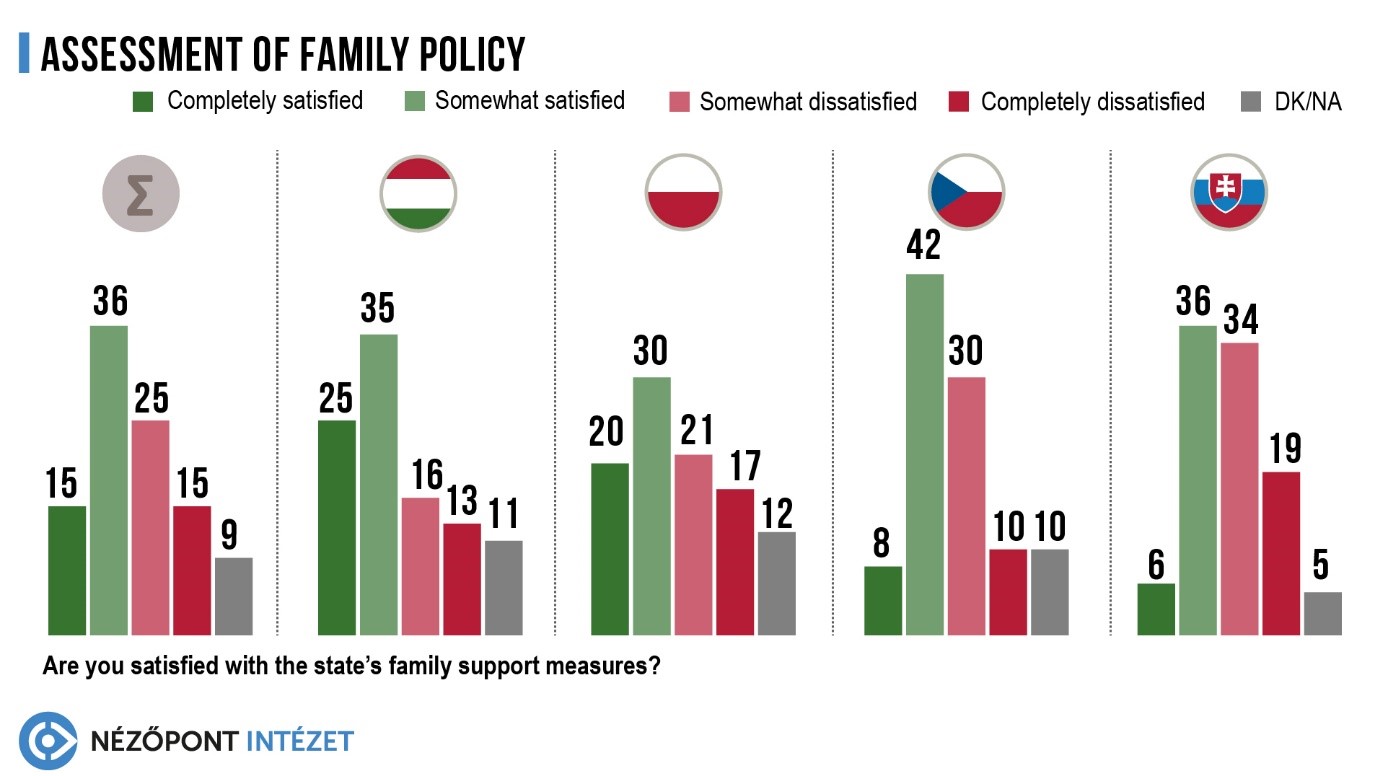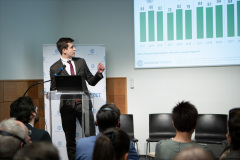The large majority of the population in V4 countries considered themselves right-wing at the end of 2019, reveals a public opinion poll conducted in the four countries with the participation of Nézőpont Intézet. In the region once referred to as post-communist, 47 percent of respondents identified as right-wing, 29 percent as centrist, and 24 percent as left-wing.
Research shows that there are twice as many right-wing than left-wing constituents in V4 countries, essentially making every other citizen right-wing. The proportion of right-wingers is highest in Czechia and Hungary (51 and 52 percent, respectively), and the lowest in Poland (37 percent), where they are still a relative majority compared to left-wingers (32 percent). The proportion of left-wingers is the lowest in Hungary (18 percent).

Younger people in particular call themselves “moderately right-wing”, which makes it likely to be a lasting rearrangement. Between the oldest and the youngest, the gap between right and left is constantly widening. In the 60+ age group, the right and left-wing proportion is 41 versus 29 percent, while it is 53 versus 22 percent among those aged 18-29.
The research also covered the issue of immigration, and the results show that the Polish, Czech, Slovak and Hungarian public are of the same opinion. As in recent years, public opinion in the Visegrad countries remains predominantly anti-immigration. 72 percent of respondents are dissatisfied with Brussels’ handling of illegal migration. Recurring proposals for the distribution of immigrants based on compulsory quotas are also rejected by 68 percent of those surveyed.
It is also a common point that the majority of voters are very critical of Western European “hot topics” such as the liberalisation of drugs, which is rejected by 72 percent of the respondents and supported by only 22 percent.
It can be observed that agreement between the four countries is not limited criticism but extends to what needs to be done. Research data seem to confirm the effectiveness of the large-scale family support measures that the Hungarian and Polish governments have been enacting since 2011 and 2016, respectively. Housing, tax and social security contribution subsidies all have a significant role in the assistance given to families in Hungary. Among the citizens of the Visegrad countries, Hungarians are the most satisfied with their government’s family policy (60 percent).
In Poland, the main pillar of family support is a payment scheme first launched in April 2016, and which now provides PLN 500 (HUF 37,500) after each child as of September 2019. 55 percent of Poles are satisfied with the governing Law and Justice Party’s (PiS) family policy.

At the end of 2019, most Central Europeans are cautiously optimistic about the future. 48 percent of all respondents believe that their country will be better off in five years, and 42 percent think the opposite. In Hungary, Czechia and Slovakia, the majority feel “hopeful”(51, 51 and 55 percent, respectively).
The purpose of the research was to explore common points between the four Visegrad Member States. The research was supported by the International Visegrad Fund but does not necessarily reflect the official position of the Fund.
You can read the detailed study of the Visegrád countries here.
The telephone interview based (CATI) public opinion poll was conducted by CEPER between 13-28 November 2019 in four Central European countries (Hungary, Poland, Czechia, Slovakia) involving 1,000 respondents in each. The sample is representative for the 18+ population by gender, age, region, settlement type and education level. In the case of a sample of 1,000 the maximum margin of error is 3.2 percent.









